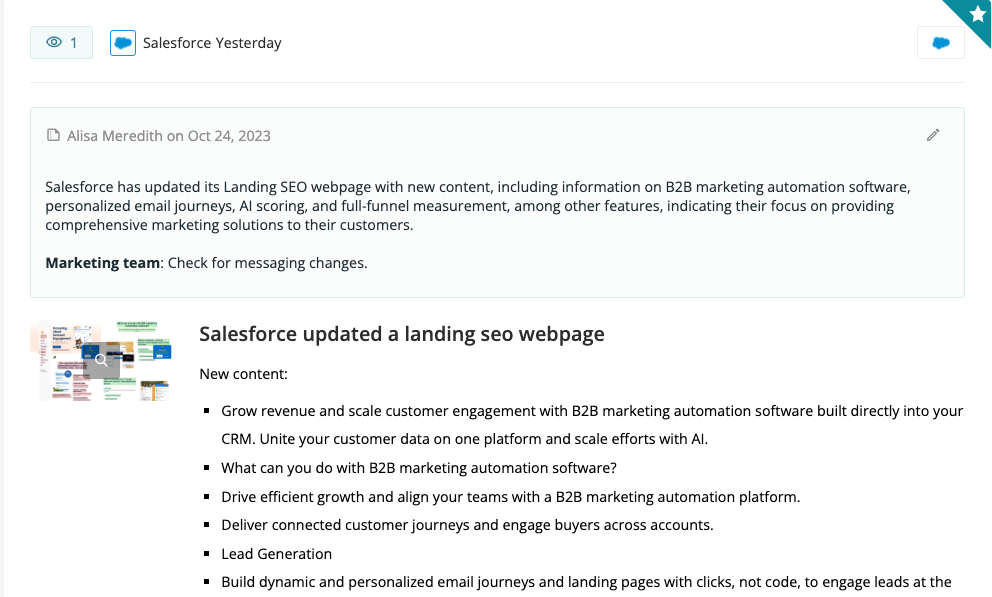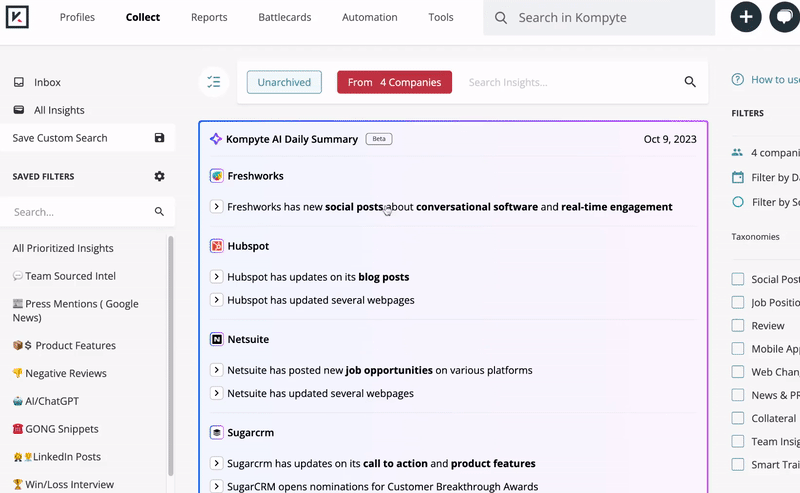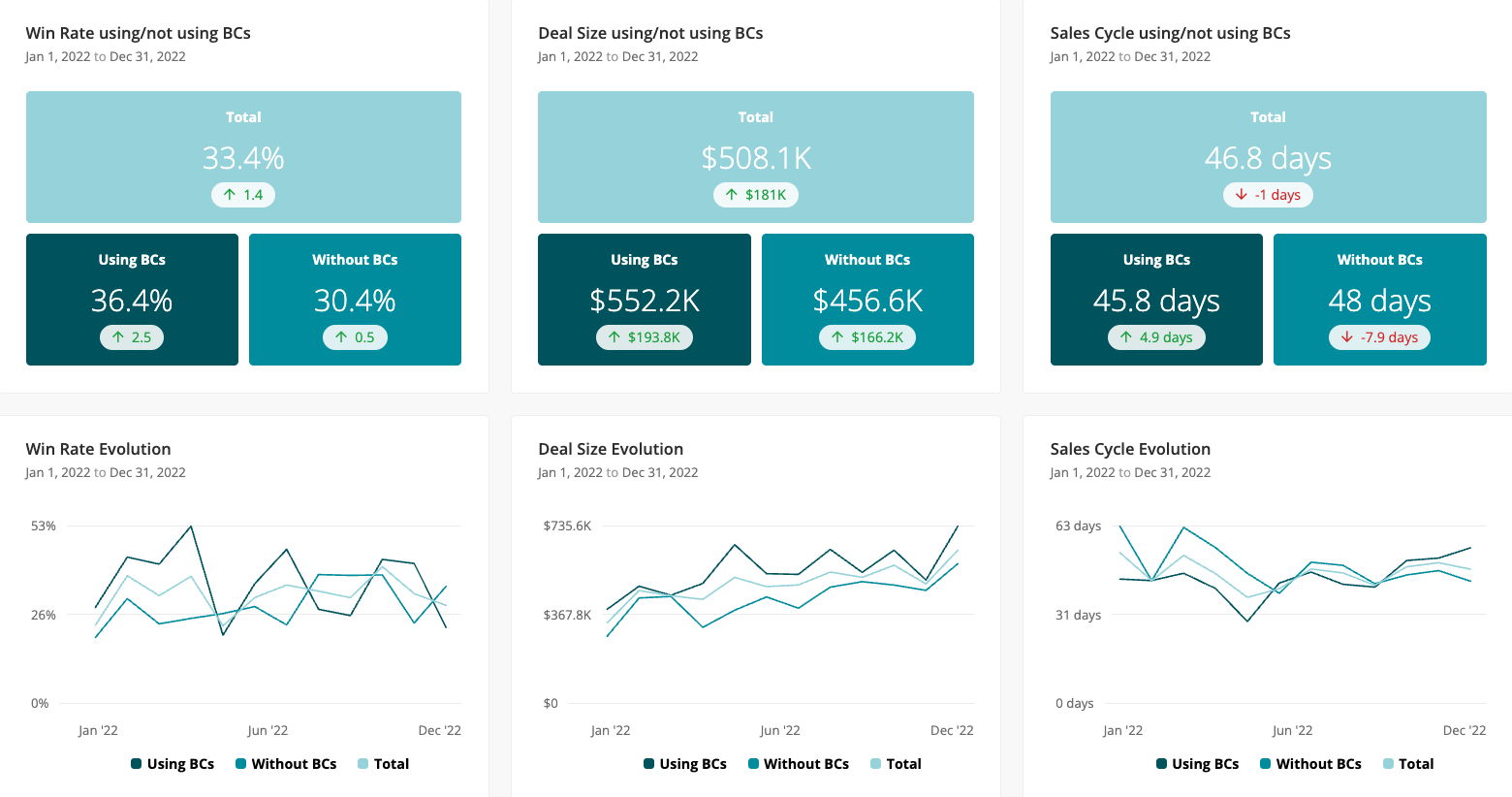3 Underused, Highly Effective Ways to Use Competitive Intelligence
3 Underused, Highly Effective, Ways to Use Competitive Intelligence. See how you can learn from your competitor's mistakes, use real-time data to...
It's time to bust competitive intelligence myths and embrace competitive-informed growth. Your organization will thank you.
.png)
Maybe you're a Product Marketing Manager eager to excel in your role.
But the idea of “doing” competitive intelligence has always felt ambiguous and just a little out of reach.
You've heard other Product Marketers talk about it, but you need to figure out if competitive intelligence can bring value to your company, and if so, how you can make a case for investing in a competitive intelligence program.
You're not alone. Many marketers share these doubts, usually because of the misconceptions that shroud competitive intelligence in mystery.
In this article, we'll peel back the layers of misunderstanding to help you grasp the power of competitive intelligence and prepare you to communicate its value to your organization - minus the myths!
It could be because the “CI” abbreviation for “competitive intelligence” evokes thoughts of the CIA. Or maybe (OK, more likely), it's because you've heard of a few competitive intel tactics gone wrong.
Whatever the reason, competitive intelligence evokes images of ski-masked marketers using flashlights in the dark offices of their competitors, rustling through files of paper for trade secrets and competitor lists to exploit.
This couldn't be further from the truth. Think ethics, not espionage.
Competitive intelligence professionals and Product Marketing Managers (PMMs) who specialize in competitive intelligence are, almost without exception, dedicated to gathering and using competitive intel ethically. The Strategic Consortium of Intelligence Professionals, the largest organization for competitive intelligence folks, takes a strong pro-ethical competitive intelligence stance.
When you practice ethical competitive intelligence, you rely solely on publicly available data. You'll be surprised how much public info is out there for your entire organization to learn about and grow from.
Bottom line: Save your ski mask for the slopes. Ethical competitive intelligence practices are standard.
Yes, sales teams love any fresh competitive intel you can give them. With your up-to-date, relevant insights, they can increase their competitive win rates and bust through their sales quotas.
But sales aren't the only folks hungry for your latest intel. Information on trends in the competitive landscape helps teams across your organization do better work.
Competitive intel regarding:
Sushen Dang, a product marketing professional in Ontario, Canada, explains:
"In my six years as a competitive intelligence professional, I've collaborated with diverse organizational teams, such as the Product, Engineering, and Marketing teams - all needing competitive intelligence. Competitive intelligence's role is multifaceted, encompassing strategic decision-making, roadmap development, marketing enhancement, GTM strategies, competitor analysis, and influencing the organization's overall strategy. It's a crucial asset for the entire organization." -- Sushen Dang, Competitive Intelligence and Product Marketing Professional
This one CAN be true. If you pass along a competitive news soundbite without explaining what it means for the company, most teams will say "cool," nod, and return to whatever they were doing.
And that happens a lot.
But if you share this competitive tidbit along with:
Then, competitive intelligence can be "cool" and provide strategic, actionable intelligence that drives informed decisions.
Notice the word "tidbit" mentioned above. The news you pass along to your organization should be the size of a tweet. Your insights should be the length of an X/Twitter thread, with a link to a press release or product page for more information.
This tweet-thread-link approach gives just enough information for your colleagues to pay attention. They merely need to click on your provided link for more information.
Note that Kompyte does much of this work for you, by creating an AI-powered summary with a click. You can then add your commentary and share by whatever means works best for your team.
Competitive intelligence often takes a back seat, and understandably so. When a typical day is jam-packed with messaging, positioning, GTM initiatives, sales enablement, stakeholder corralling, and leading meetings, you might feel like you have no gas in the tank to conquer competitive intel.
But without updated, relevant competitive intelligence, how can you effectively bring products to market with unique positioning? To succeed at all your other initiatives, competitive intelligence must be a consistent focus area.
Luckily, searching for intel can be streamlined to fit busy schedules. Most Product Marketing Managers in charge of competitive intelligence spend no more than 15 minutes a day on it. By focusing on key questions and using automation, you can efficiently gather strategic insights that will give all your other work an edge.
Using competitive intelligence automation from Kompyte also allows you to get a daily AI-powered summary of all your competitors' activities. Dig into anything that needs a closer look, view each insight that went into the summary, and share with any team members who need to see it. Get a demo.

Driving a solid competitive intelligence program takes time, but there's also a cost. With an increased focus on the bottom line, marketing teams are skeptical about investing in competitive intelligence technology, education, or events if they can't see the return.
Don't fear. Demonstrating the ROI of competitive intelligence is possible by measuring its impact on sales, market positioning, and product improvements.
Each time competitive intelligence helps your organization:
It is a visible proof of the team's return on investment in a competitive program.
Kompyte makes it easy to show the results of your competitive intelligence efforts. Win/Loss Analysis shows win rates, deal size, and sales cycle for deals where your Battlecards were used vs. where they were not. This information can be imported from virtually any platform, or integrated directly with Salesforce.
Say you now see the value in how competitive intelligence can benefit the entire company.
But if your organization is mid-sized, you might get pushback that you need to be bigger before it makes sense to invest time and money here.
The truth is that competitive intel is the ultimate growth lever. Companies with as few as 50 employees have used competitive intelligence to identify growth opportunities and compete effectively in their niches.
Fortune 500 companies might have teams dedicated to competitive intelligence. However, many smart mid-market organizations use tools like Kompyte to save time to build a strong competitive program with relevant information that continuously demonstrates ROI. And it only takes one person about an hour a week to maintain.
Now that we’ve introduced Daily AI Summaries with skimmable, sharable recaps of your competitors’ activities for the day, it’s even faster and more efficient.
Let's review these busted misconceptions about competitive intelligence.
Embarking on competitive intelligence isn't a secret spy mission; it's an ethical practice relying on publicly available data. And its value goes far beyond the sales team by providing strategic guidance for product development, marketing, executives, and customer success teams.
Proving the ROI of competitive intelligence is possible, as it impacts sales, market positioning, and product improvements. Even mid-sized businesses can use competitive intelligence to identify ways to grow and surpass the competition.
So, embrace competitive intelligence as a must-have asset for your organization's growth and start busting those myths!
3 Underused, Highly Effective, Ways to Use Competitive Intelligence. See how you can learn from your competitor's mistakes, use real-time data to...
Get the maximum value from your competitive intelligence by recognizing and planning for the most common pitfalls competitive analysts experience in...
Competitive Intelligence Academy: 6 competitive insights you should be watching for and incorporating into your product and marketing strategies to...
Be the first to know about new B2B SaaS Marketing insights to build or refine your marketing function with the tools and knowledge of today’s industry.